 Soon it will be time to plan and begin purchasing seeds for this year’s Nahant garden. As I have a tendency when ordering seeds to get a little over optimistic and enthusiastic, and as I’ve been gardening in Nahant for over ten years now (and coastal Massachusetts closer to twenty), I thought it would be a useful exercise to remind myself, by recording some notes on my experiences with various plants in this climate, what has and has not worked for me, what it makes sense to grow, and what it might not.
Soon it will be time to plan and begin purchasing seeds for this year’s Nahant garden. As I have a tendency when ordering seeds to get a little over optimistic and enthusiastic, and as I’ve been gardening in Nahant for over ten years now (and coastal Massachusetts closer to twenty), I thought it would be a useful exercise to remind myself, by recording some notes on my experiences with various plants in this climate, what has and has not worked for me, what it makes sense to grow, and what it might not.
Between flowers, veggies, herbs, and whatnot else, there’s too much to cover all of it in a single post. So I’ll break it down, and in this post tackle herbs.
Generally speaking I’ve found herbs are very worth having in my New England garden. Most are relatively easy to grow, even in the cool, coastal climate of Massachusetts. Most are fairly easy to start, if not from seed then from cuttings or transplants. A fair number will winter over and give you two seasons or more. They don’t take up a lot of space, they’re pleasant to look at, and are largely free of diseases. Importantly, for someone like me who uses herbs quite a bit in cooking, growing them can save quite a bit of money as herbs, especially fresh herbs, are typically not cheap to buy fresh in quantity.
So here’s a breakdown of my favorite garden herbs. I used a star system (**** is the highest) to rate how indispensable I find them in the garden.
Basil (****): If I could only have one herb in my garden, it would be basil. Basil produces so nicely, is useful in so many dishes, and is so expensive to buy in quantity, that growing it is a no-brainer. (Also, the “fresh” basil you find in the market, in addition to being overpriced, is often wilted, moldy, and devoid of flavor.) Starting basil from seed is a little hit or miss. Germination is good, but getting the seeds from the sprout to healthy seedling stage takes some attention: too little water and it easily dries out; too much and seedlings damp off. That said, I don’t think it’s necessary at all to buy basil as seedlings unless you can get it at a really good price. Most important, both to raising seedlings and to getting them started in the earth, is to give them the sunlight and warmth basil loves. In coastal New England, basil does not like planting outdoors earlier than mid-June. Seedlings require a lot of light and an environment that doesn’t dip below the 70s.
Basil is an herb best used fresh and in my opinion that’s the only way to use it. Dried basil, while it’s available in the market, retains so little of the fresh plant’s flavor that it is not worth using. For this reason I don’t dry my basil at the end of the season. The bulk of it gets used in homemade tomato sauces (which are themselves frozen for later use). You can also make a paste of blended basil leaves and olive oil which you can freeze to have it available until next season’s basil comes online. It’s not nearly as good as fresh, but it’s a world better than dried.
Varieties: Basil comes in many varieties and every year there is something new to try. I’ve done well with standards like Genovese and Italian Large Leaf. I have tried Thai basil but the plants, while do not produce well, perhaps due to the cool New England climate.
Parsley (****): Parsley is difficult to get started from seed. Germination rate is low, and once germinated seedlings tend to be delicate and spindly for weeks until they finally “get going.” Once it finally does get going, however, parsley is one of the hardiest of garden herbs. It does well in a variety of soils, thrives in partial shade to full sun, and is very good at taking its moisture “out of the air,” so it doesn’t require a lot of watering .Parsley benefits from regular cutting, which encourages new shoots and a fuller plant. While plants typically last only one season, on occasion they may come back for a second. Like basil, parsley is a poor candidate for drying, retaining little of its flavor and none of the attractiveness that make it such an appealing garnish.
Varieties: While I’ve done well with both broad leafed and curly leafed varieties, I find broad leafed parsley such as Giant of Italy more robust, bountiful, and flavorful.
Sage (****): Sage is an absolutely wonderful home garden herb–a perennial, easy to grow, hardy, attractive, rich in flavor and scent, and fine candidate for drying (although it winters so well it’s as easy to pick leaves from the winter garden as you need them). I’ve never grown sage from seed and never expect to; seedlings are easy enough to buy and do quite well. Sage in my garden does well in full to partial sun, only requiring a little pruning now and then to keep it from getting leggy.
Varieties: Common sage is all I’ve ever grown and all I’d ever expect to.
Oregano (***): Given that dried oregano is inexpensive to buy and fairly flavorful, oregano in the garden is not a requisite. Still, oregano is so attractive, aromatic, and easy to grow that that I can’t imagine going without it. Like most herbs, it’s needs are basic: warmth, moderate to full sun, moderate moisture, and well-drained soil. While growing oregano from seed can be done, it’s much easier is to start it from seedlings. Unfortunately, the seedlings many garden centers sell is not the true Greek oregano (Origanum vulgare hirtum…the hirtum being the important part) but wild majorum (Origanum vulgaris), an ornamental oregano which has a nice scent but zero flavor. To test if a plant is Greek Oregano, break off a leaf and bite into it…true Greek oregano will literally numb the tip of your tongue. It also produces white flowers, as opposed to wild majorum’s pink. In my climate oregano is a slow but steady grower. It’s described as a tender perennial; with a light covering of leaves to protect it I’ve had the same plant come back year after year.
Chives (***): Chives are so simple, hardy, and easy to grow that it’s easy to take them for granted. I’m not even sure where mine came from originally…probably I found them growing wild in the lawn. I don’t use them a ton in cooking although they make a nice garnish in soups, sauces, and salads. They do fine with moderate light and moderate moisture. About the only maintenance they require is separating every few years if they get too thick. From late spring into early summer their purple flowers make one of the showier displays in the herb garden. Once planted, they come back on their own ever year. The only maintenance they require is occasional separating to prevent overcrowding. I don’t go to the trouble of drying my chives for winter use. Like basil, dried chives do not hold flavor well.
Thyme (***): I wish I used thyme more in cooking. It’s certainly something I aspire to. When I think of this classic culinary herb I think of hearty, steaming winter dishes, soups and stews. Like oregano, thyme can be a little tricky to start from seed…difficult at first and prone to drying out. That early stage is followed by a period of slow growth as a seedling. But once transplanted in the ground, when it eventually takes hold, it becomes quite hardy. In fact, it is one of the hardiest herbs in the garden, a perennial that can get by in partial sun with very little care. Like oregano, thyme is one of the best herbs to dry, retaining its flavor quite well. In my garden thyme spreads nicely yet without taking over. While it prefers full sun it does fine in partial shade. Thyme is a perennial that has a reputation of getting “woody” after several seasons; that is, the ratio of leaf to stem goes down quite a bit. When this happens, traditional advice is to pull out the plant and put in a new one. A fair solution, although not necessary if the current plant is still producing enough leaves to suit your needs.
Varieties: German Winter
Rosemary (**): Rosemary is among my favorite herbs from an aesthetic standpoint: attractive and headily fragrant. It’s also wonderful to cook with, especially as a flavoring for fish or fowl. In the garden I have success…but only up to a point. Given full sun and well-drained soil, rosemary grows quite well in my climate. However, each year attempts to bring rosemary inside to overwinter in pots meets with failure. The plants do OK for a while, but then one day just seem to give up the ghost and die almost overnight. This may well be due to insufficient conditions on my part as I have a brother-in-law who has had the same rosemary plants in his kitchen window for years now. When grown indoors, rosemary demands the right combination of plenty of sun, constant temperatures, and–very important–regular watering, yet without over-saturation. Because these are conditions I just cannot meet, these days my rosemary plants begin as seedlings purchased in the spring. (Growing rosemary from seed, due to poor germination, is very difficult and not worth it.) They go into the garden and end there in the fall, by which time they may have acquired a height of 24 to 30 inches. Rosemary is a good candidate for drying, although the dried needles, while flavorful, do not retain nearly the same heady aroma of fresh cut. Thus, even when I have dried rosemary on hand, in winter I’ll often opt for a trip to the market to buy fresh.
oregano
Cilantro (**): As much as I like cilantro, and as easy as I sense it is to grow in some places, I’ve just never had much luck with it. It germinates well enough from seed but I find taking the germinated seed to a healthy seedling challenging. Like parsley, it goes through an extended fragile stage (at least in containers) where too much or too little water can kill it easily. Once it takes hold in the garden (full sun is requisite) it does well enough but goes to seed in a matter of weeks. My best cilantro crop is not one I start in containers but the one that comes up on its own in mid to late spring, reseeded from last year’s plants that bolted. While I’m a big fan of volunteers, the problem is that after that first crop the cilantro does not reseed itself again until the following year (that’s something I’d like to understand…why this year’s seeds do not germinate until next year). The time I’d most like a steady supply crop of fresh cilantro is from late summer to mid-fall to use in with my fresh tomatoes and salsa roja and pico de gallo. Unfortunately that’s when I never seem to have any in the garden. A conclusion I’m coming to is simply that cilantro is happiest and healthiest when growing wild like a weed. Hence it does not like being started in containers and direct seeding may be a more efficient way to plant. Due to its propensity for fast bolting, to have a steady, full season crop of cilantro it seems you need to start new seeds every six weeks or so.
Mint (*): Against advice to the contrary, I planted mint in my garden several years ago. By the following season, when runners kept popping up everywhere despite almost daily pulling, I acknowledged the mistake. Never again. Mint simply takes over and once it’s taken hold is extremely difficult to remove. Last year as an experiment I tried mint in some largish containers but it did not do particularly well…to thrive, mint, though shallow-rooted, needs lots of room to spread. In the future I’ll stick to getting my mint from the market or from friends (hopefully not neighbors) who grow it. Indian markets are a good source of inexpensive mint since it is used so extensively in Indian cooking.
Dill (*): I list dill here having never really grown it successfully or given it a decent shot. I’ve tried it from seed once or twice and found it difficult to germinate and harder still to bring to seedling stage. But I’d like to try again. Hence this entry is more a reminder to myself than anything else.
Here’s a table summarizing the characteristics of the herbs I’ve listed. Lots of this is subjective…just my best impression based on personal experience. Your mileage may very
|
Easy to Start from Seed |
Easy to Grow |
Dries Well |
Good Money Saver |
Overwinters |
| Basil |
Y |
Y |
N |
Y |
N |
| Chives |
? |
Y |
N |
N |
Perennial |
| Cilantro |
Y |
Y/N |
N |
Y |
No, but will reseed itself. |
| Dill |
N |
Y |
N |
N |
N |
| Mint |
? |
Y |
N |
N |
Y |
| Oregano |
Y |
Y |
Y |
N |
Y |
| Parsley |
N |
Y |
N |
Y |
Occasional bi-ennial. |
| Rosemary |
N |
Y |
Y |
Y |
If brought inside |
| Sage |
? |
Y |
Y |
Y |
Y |
| Thyme |
N |
Y |
Y |
Y |
Y |
Herbs I Tried and Moved on From
- Bee Balm: This actually did well and was quite attractive but only lasted a single season. It’s use was ornamental only, but I might try introducing it again.
- Catnip: When it did grow the cats quickly tore it up.
- Ecinacea: aka, purple coneflower. This grows wild in my area but in my little Nahant garden with limited light does only so-so. Still, it’s very pretty so I may give it another go.
- Lavender: Tried it once from seedlings. Did not do especially well plus not sure what I’d use it for anyway.
Finally…Some Herbs I’d Like to Try


 Soon it will be time to plan and begin purchasing seeds for this year’s Nahant garden. As I have a tendency when ordering seeds to get a little over optimistic and enthusiastic, and as I’ve been gardening in Nahant for over ten years now (and coastal Massachusetts closer to twenty), I thought it would be a useful exercise to remind myself, by recording some notes on my experiences with various plants in this climate, what has and has not worked for me, what it makes sense to grow, and what it might not.
Soon it will be time to plan and begin purchasing seeds for this year’s Nahant garden. As I have a tendency when ordering seeds to get a little over optimistic and enthusiastic, and as I’ve been gardening in Nahant for over ten years now (and coastal Massachusetts closer to twenty), I thought it would be a useful exercise to remind myself, by recording some notes on my experiences with various plants in this climate, what has and has not worked for me, what it makes sense to grow, and what it might not.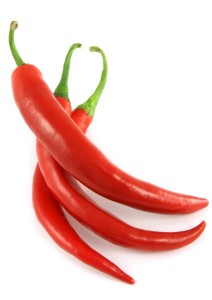 For Christmas my sister Karen gave me an assortment of dried peppers she purchased at Christina’s Spice & Specialty Foods of Inman Square, Cambridge, MA. As I wasn’t familiar with the varieties (and as in addition to eating them I might want to try planting them come spring) I looked them up. Here they are described.
For Christmas my sister Karen gave me an assortment of dried peppers she purchased at Christina’s Spice & Specialty Foods of Inman Square, Cambridge, MA. As I wasn’t familiar with the varieties (and as in addition to eating them I might want to try planting them come spring) I looked them up. Here they are described.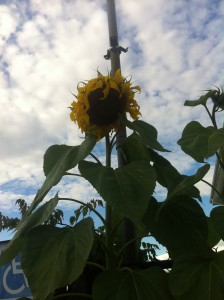
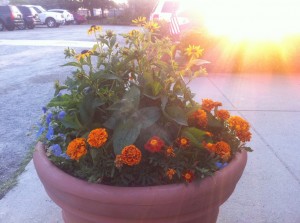
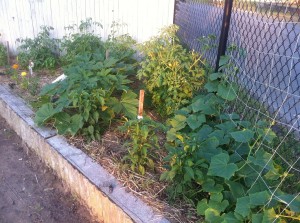
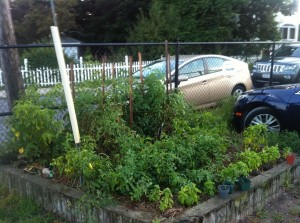
 With the second half of June summer arrived with several heat waves bringing days in the 90s. Lots of sun two although two big storms each brought about an inch of rain. To date I’ve had to do very little watering this year.
With the second half of June summer arrived with several heat waves bringing days in the 90s. Lots of sun two although two big storms each brought about an inch of rain. To date I’ve had to do very little watering this year.